It did me good today to learn that admission to the Tower of History, in real terms, costs only a little more than it did nearly 50 years ago. Sault Historic Sites, the nonprofit that owns the structure, obviously isn’t trying to gouge visitors. Or maybe that, as interesting as it is, the tower is in out-of-the-way place, and the market won’t bear a higher price.
In any case, a newspaper article from 1975 tells me that admission for an adult was $1.25 that year. When I visited on August 5 of this year, I paid $8. An inflation calculator tells me that $1.25 that year has the current purchasing power of $7.10.
Thus I paid a little over the rate of inflation for all those years, but not much; we can round up the sum to pay for more maintenance, since the tower dates from 1968. Looks like it, too. Concrete all the way up and down.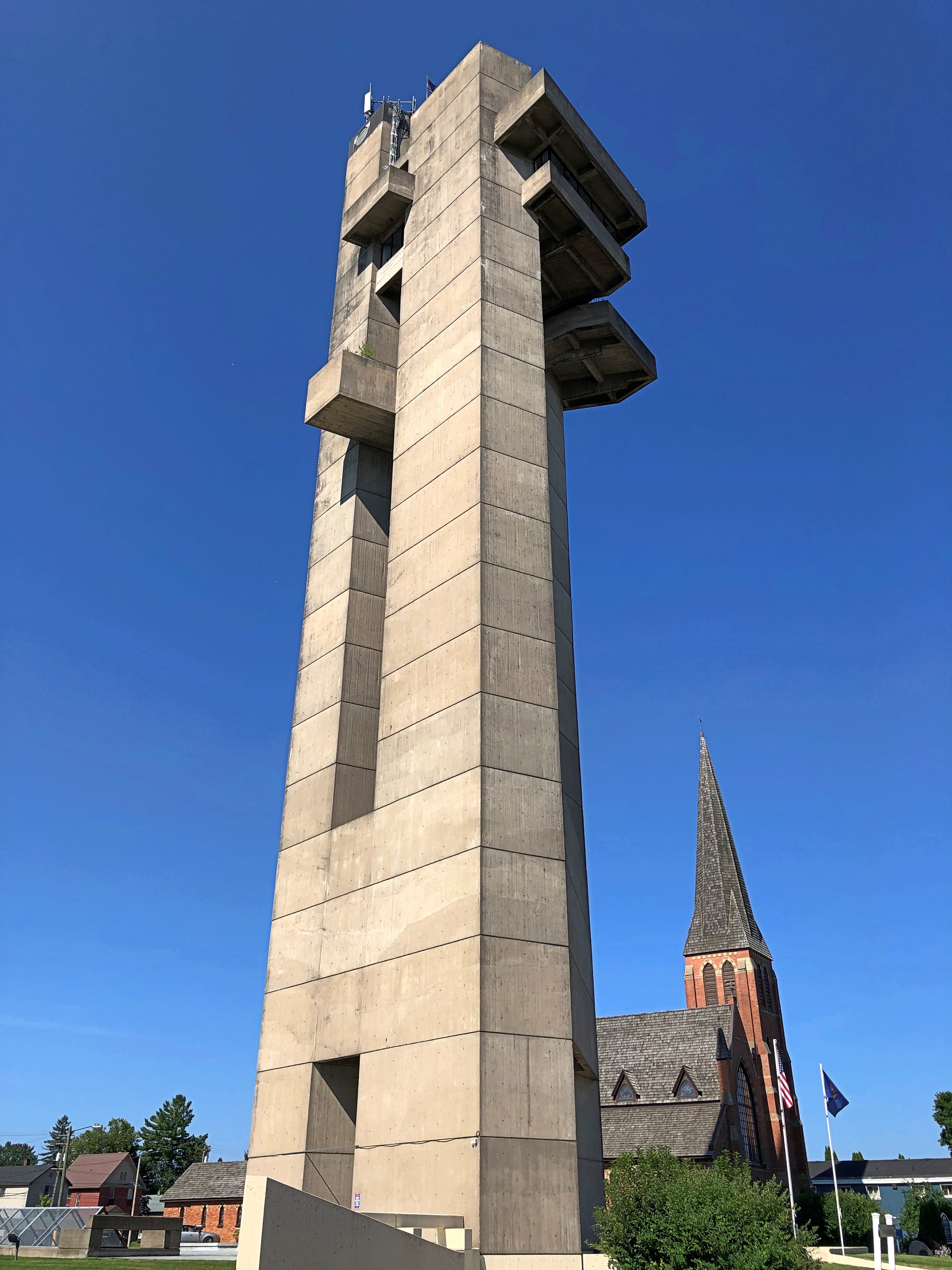
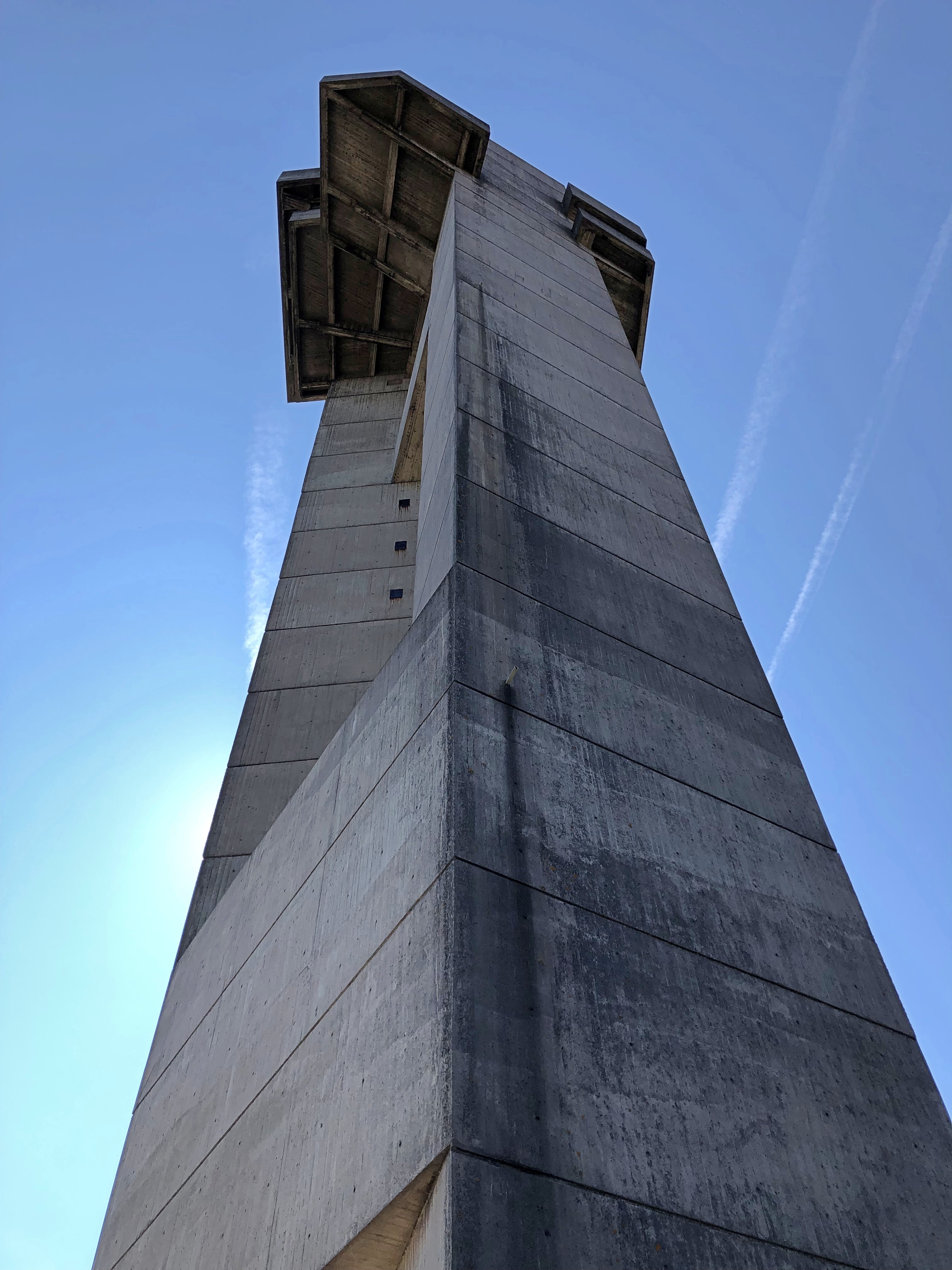
The tower was the first place I went after returning to the United States that morning. It stands 210 feet over the mostly low-rise city of Sault Ste. Marie, Michigan. As concrete towers go, it isn’t bad, but I didn’t come just to admire it from the ground. It’s an observation tower, and I’m a sucker for those. You’re paying for the views.
Such as of the Canadian Sault Ste. Marie to the north, across St. Mary’s River, the connector between Lakes Superior and Huron.
The international bridge, to the west.
Part of the U.S. locks. Superior and Huron aren’t at the same elevation, with a difference of 23 feet, so the river has long been site of a canal, and indeed work is still under way enlarging the locks.

A docked ore carrier. More about that later.
The Michigan city, to the south.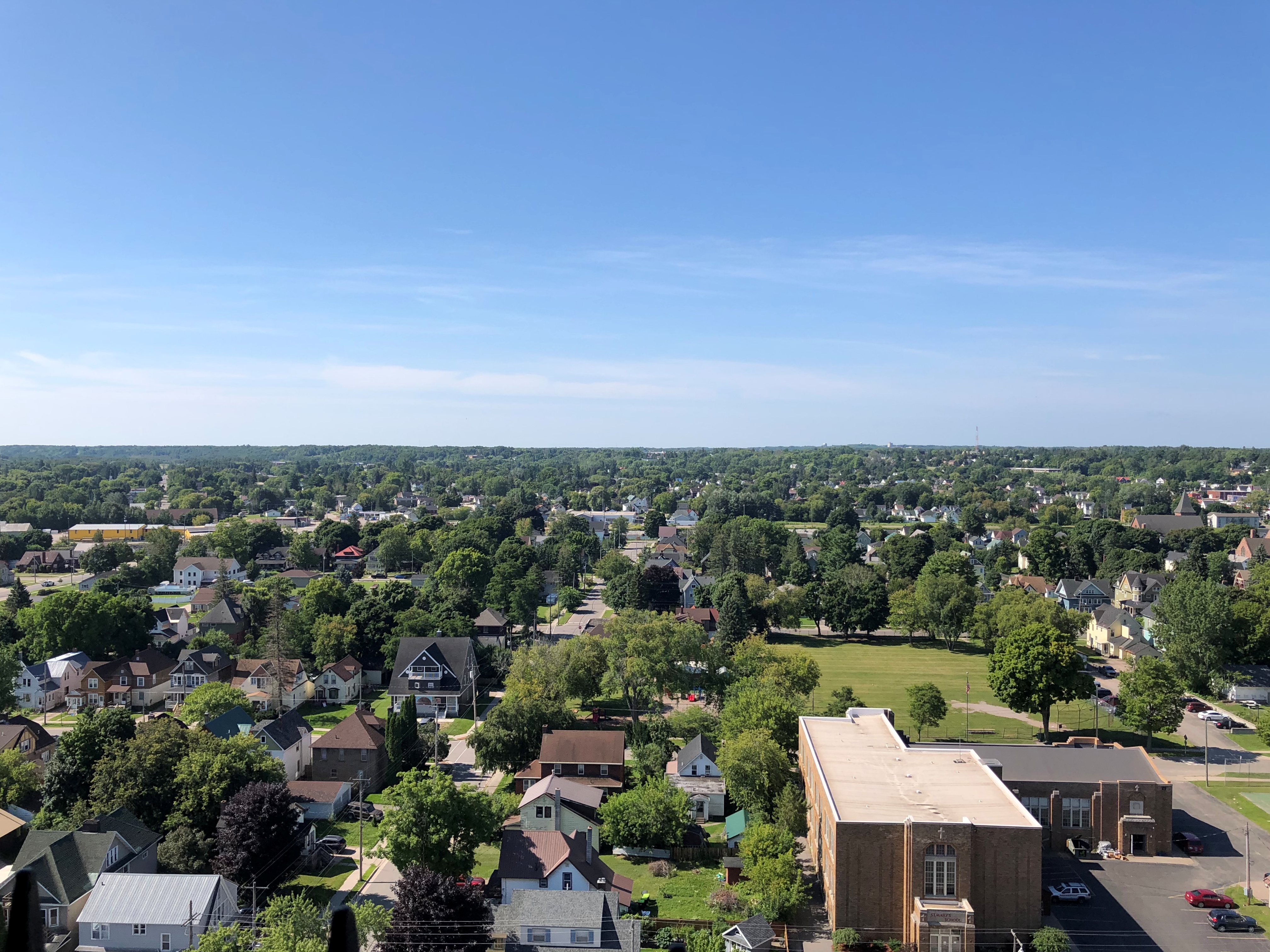
In the 1960s, the Holy Name of Mary Catholic Church in Sault Ste. Marie, Michigan, decided to build a tower to honor the missionaries who came to the Great Lakes once upon a time, and picked the site of a log cabin and chapel built by Fr. Jacques Marquette, S.J.
Shrine of the Missionaries, it was to be, as part of a larger complex that would have also included a community center and a new church building. The ballooning expense of the tower torpedoed the other plans, however, and the Diocese of Marquette acquired the tower, which it eventually donated to the nonprofit that runs it even now. Tower of History, I assume, was a secularization of the name.
St. Mary’s still stands a stone’s throw from the tower. I’m glad the handsome 1880s Gothic Revival church wasn’t replaced by an oddity from the 1960s.
The church is also a pro-cathedral.
We stepped inside. Nice. I was reminded a bit of the smaller, but equally colorful Painted Churches in Texas.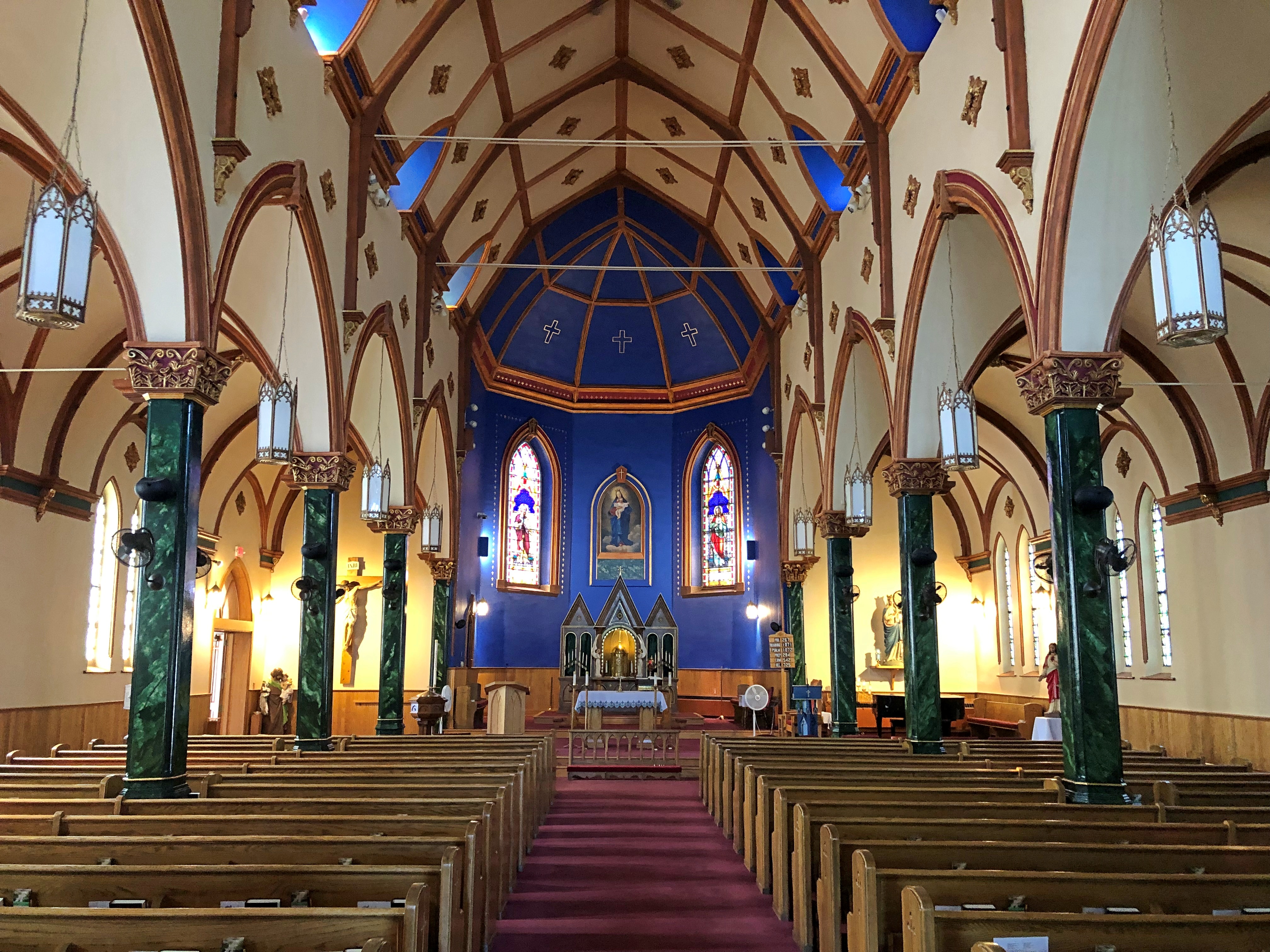
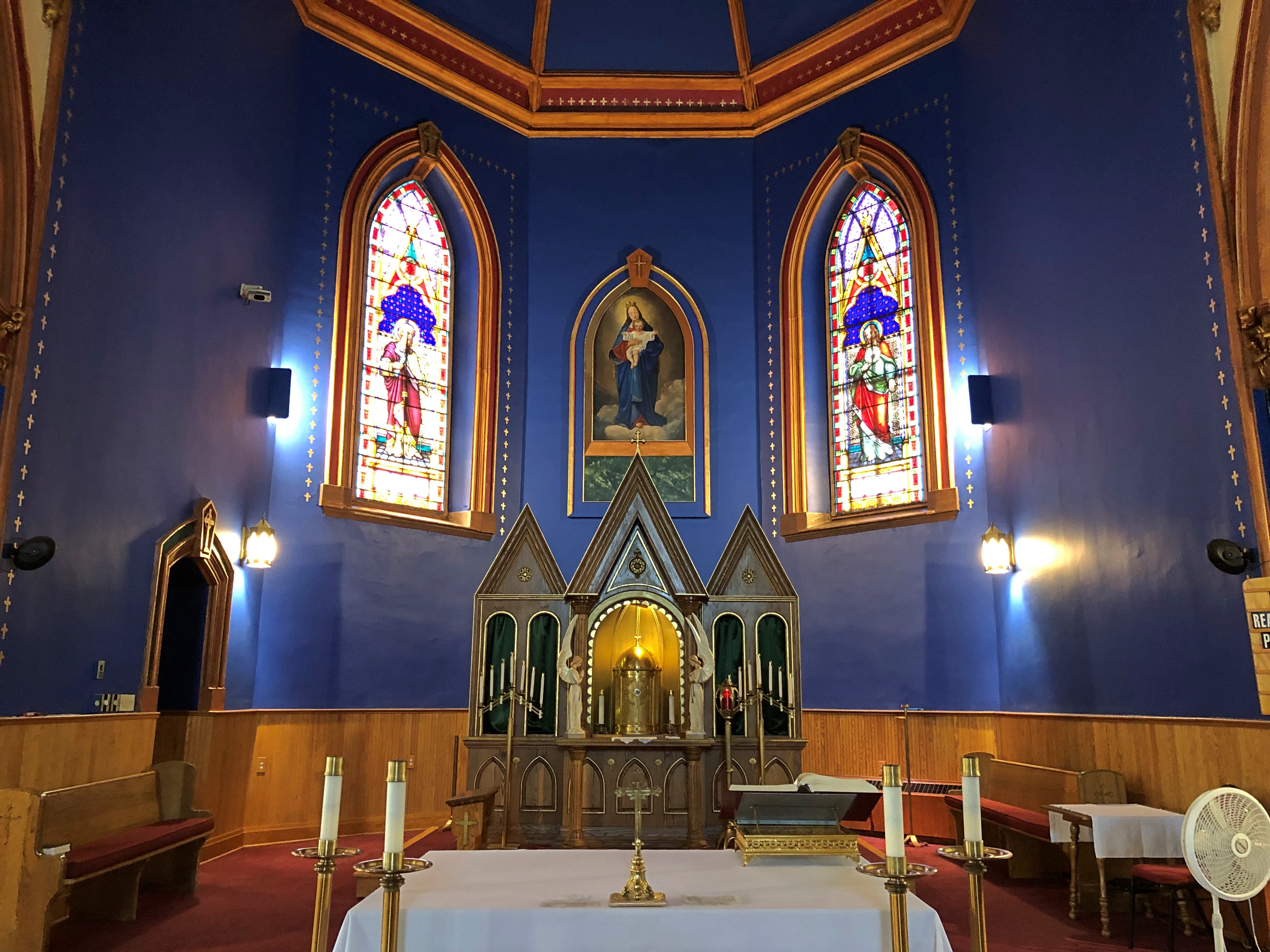
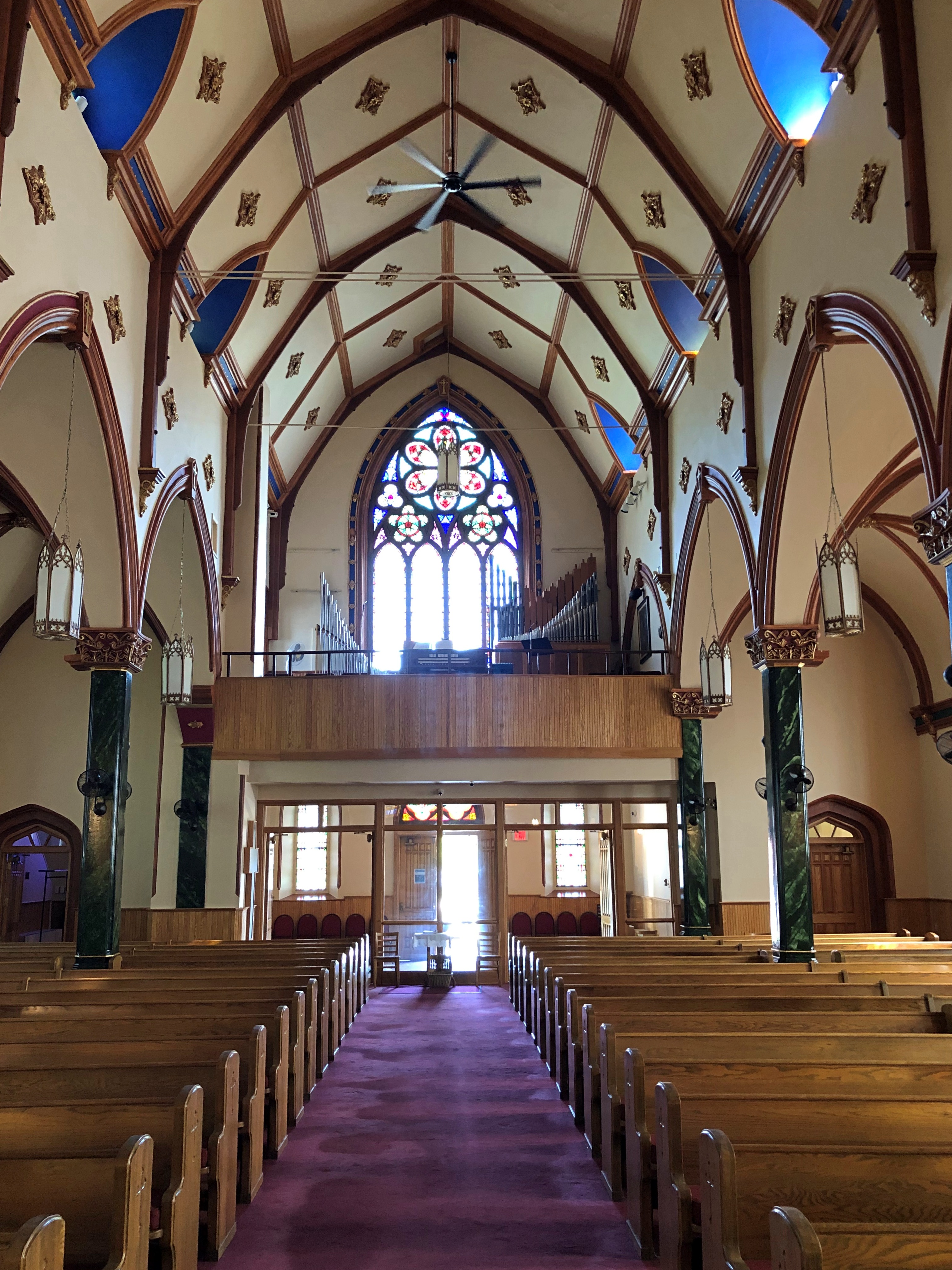
Perhaps there is no air conditioning — I can’t say I checked — but if so, that makes for an interesting array of fans.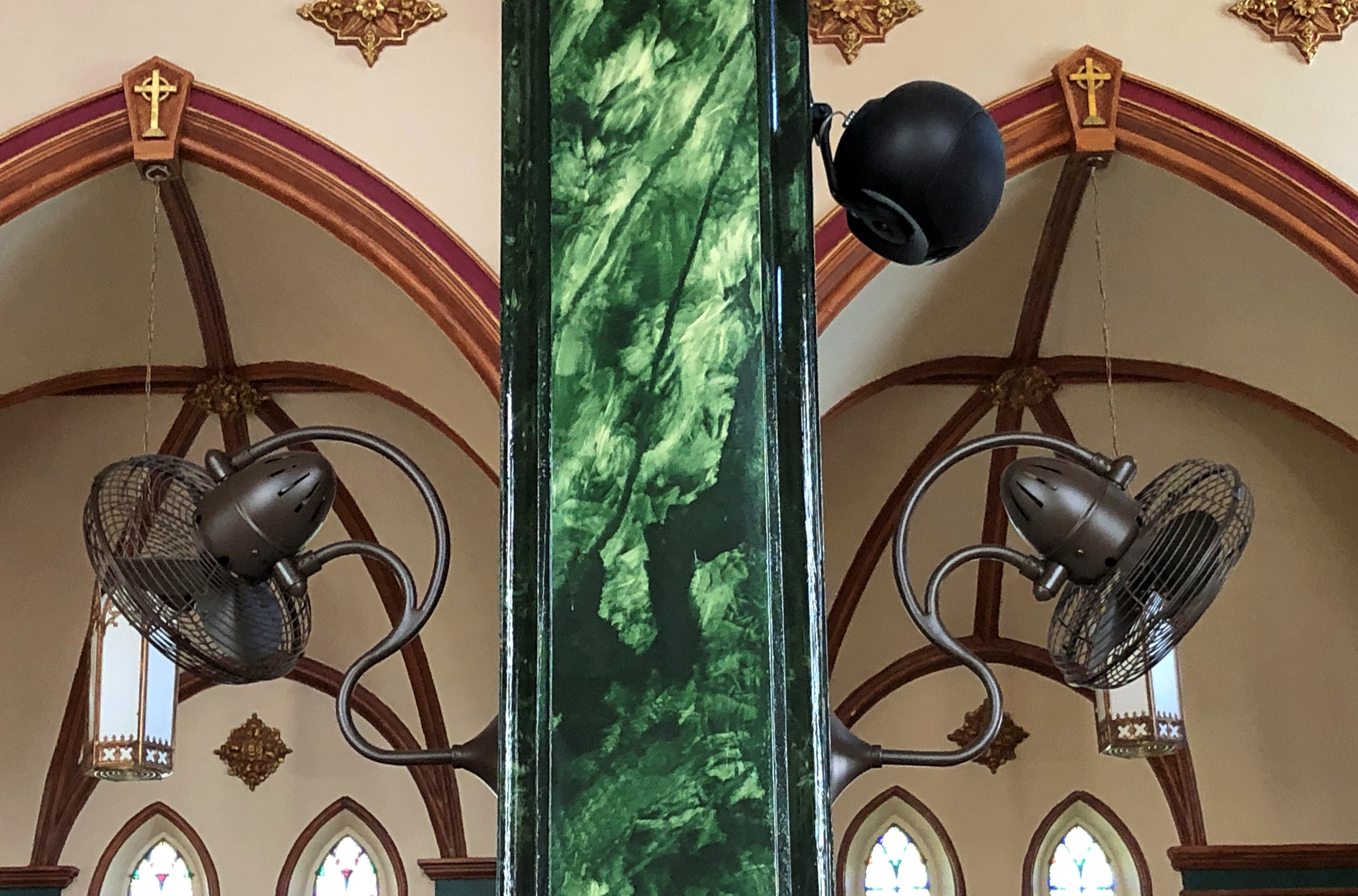
It was good to be back in the UP.